Ion channel profiling of the Lymnaea stagnalis ganglia via transcriptome analysis
- PMID: 33407100
- PMCID: PMC7789530
- DOI: 10.1186/s12864-020-07287-2
Ion channel profiling of the Lymnaea stagnalis ganglia via transcriptome analysis
Abstract
Background: The pond snail Lymnaea stagnalis (L. stagnalis) has been widely used as a model organism in neurobiology, ecotoxicology, and parasitology due to the relative simplicity of its central nervous system (CNS). However, its usefulness is restricted by a limited availability of transcriptome data. While sequence information for the L. stagnalis CNS transcripts has been obtained from EST libraries and a de novo RNA-seq assembly, the quality of these assemblies is limited by a combination of low coverage of EST libraries, the fragmented nature of de novo assemblies, and lack of reference genome.
Results: In this study, taking advantage of the recent availability of a preliminary L. stagnalis genome, we generated an RNA-seq library from the adult L. stagnalis CNS, using a combination of genome-guided and de novo assembly programs to identify 17,832 protein-coding L. stagnalis transcripts. We combined our library with existing resources to produce a transcript set with greater sequence length, completeness, and diversity than previously available ones. Using our assembly and functional domain analysis, we profiled L. stagnalis CNS transcripts encoding ion channels and ionotropic receptors, which are key proteins for CNS function, and compared their sequences to other vertebrate and invertebrate model organisms. Interestingly, L. stagnalis transcripts encoding numerous putative Ca2+ channels showed the most sequence similarity to those of Mus musculus, Danio rerio, Xenopus tropicalis, Drosophila melanogaster, and Caenorhabditis elegans, suggesting that many calcium channel-related signaling pathways may be evolutionarily conserved.
Conclusions: Our study provides the most thorough characterization to date of the L. stagnalis transcriptome and provides insights into differences between vertebrates and invertebrates in CNS transcript diversity, according to function and protein class. Furthermore, this study provides a complete characterization of the ion channels of Lymnaea stagnalis, opening new avenues for future research on fundamental neurobiological processes in this model system.
Keywords: CNS; Ion channels; Ionotropic receptors; Lymnaea stagnalis; Transcriptome; de novo assembly.
Conflict of interest statement
The authors declare that they have no competing interests.
Figures
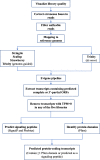
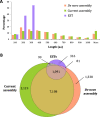


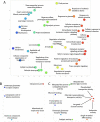
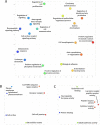
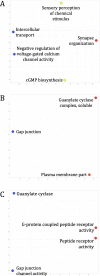
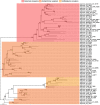






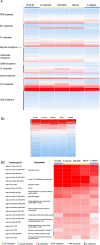
Similar articles
-
Transcriptome analysis provides genome annotation and expression profiles in the central nervous system of Lymnaea stagnalis at different ages.BMC Genomics. 2021 Sep 3;22(1):637. doi: 10.1186/s12864-021-07946-y. BMC Genomics. 2021. PMID: 34479505 Free PMC article.
-
Transcriptome analysis of the central nervous system of the mollusc Lymnaea stagnalis.BMC Genomics. 2009 Sep 23;10:451. doi: 10.1186/1471-2164-10-451. BMC Genomics. 2009. PMID: 19775440 Free PMC article.
-
De novo sequencing and transcriptome analysis of the central nervous system of mollusc Lymnaea stagnalis by deep RNA sequencing.PLoS One. 2012;7(8):e42546. doi: 10.1371/journal.pone.0042546. Epub 2012 Aug 1. PLoS One. 2012. PMID: 22870333 Free PMC article.
-
Neuropeptide Localization in Lymnaea stagnalis: From the Central Nervous System to Subcellular Compartments.Front Mol Neurosci. 2021 May 20;14:670303. doi: 10.3389/fnmol.2021.670303. eCollection 2021. Front Mol Neurosci. 2021. PMID: 34093125 Free PMC article. Review.
-
A review of the electrophysiological, pharmacological and single channel properties of heart ventricle muscle cells in the snail Lymnaea stagnalis.Experientia. 1992 Sep 15;48(9):841-52. doi: 10.1007/BF02118417. Experientia. 1992. PMID: 1383022 Review.
Cited by
-
LPS-Induced Garcia Effect and Its Pharmacological Regulation Mediated by Acetylsalicylic Acid: Behavioral and Transcriptional Evidence.Biology (Basel). 2023 Aug 7;12(8):1100. doi: 10.3390/biology12081100. Biology (Basel). 2023. PMID: 37626986 Free PMC article.
-
Functional characterization of optic photoreception in Lymnaea stagnalis.PLoS One. 2024 Nov 12;19(11):e0313407. doi: 10.1371/journal.pone.0313407. eCollection 2024. PLoS One. 2024. PMID: 39531462 Free PMC article.
-
Unique morphology and photoperiodically regulated activity of neurosecretory canopy cells in the pond snail Lymnaea stagnalis.Cell Tissue Res. 2023 Sep;393(3):547-558. doi: 10.1007/s00441-023-03799-x. Epub 2023 Jul 7. Cell Tissue Res. 2023. PMID: 37418027 Free PMC article.
-
Transcriptome analysis provides genome annotation and expression profiles in the central nervous system of Lymnaea stagnalis at different ages.BMC Genomics. 2021 Sep 3;22(1):637. doi: 10.1186/s12864-021-07946-y. BMC Genomics. 2021. PMID: 34479505 Free PMC article.
References
MeSH terms
Substances
Grants and funding
LinkOut - more resources
Full Text Sources
Other Literature Sources
Molecular Biology Databases
Research Materials
Miscellaneous

